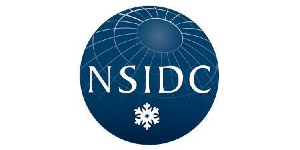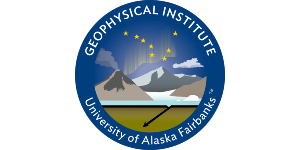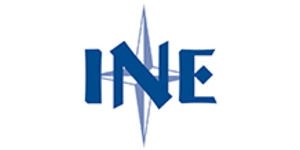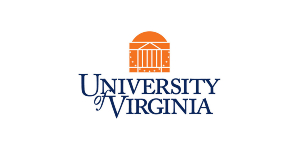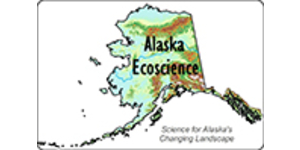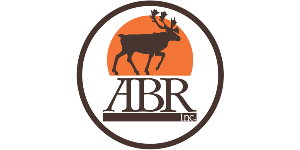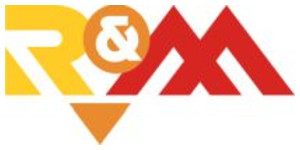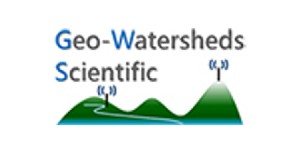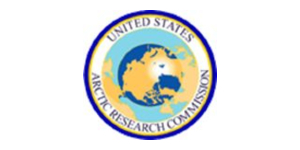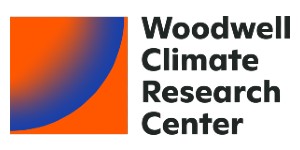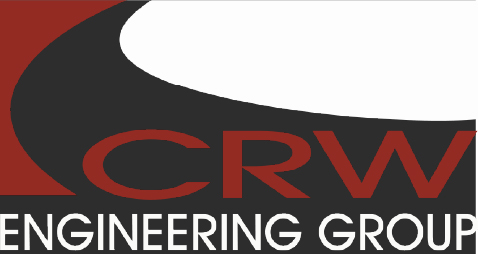Andrew Slater Memorial Awards
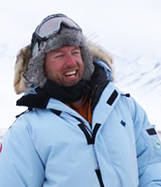 Andrew "Drew" Slater. The US permafrost community honors our colleague Andrew G. Slater (1971–2016). Andrew "Drew" Slater, land modeler extraordinaire, died on 9 September 2016. He was 44 years old. Andrew "Drew" Slater. The US permafrost community honors our colleague Andrew G. Slater (1971–2016). Andrew "Drew" Slater, land modeler extraordinaire, died on 9 September 2016. He was 44 years old.
Drew was a force within the land modeling community. He transformed our capabilities to simulate terrestrial processes and change in cold regions. He was best known for his noteworthy advances in modeling snow, permafrost, and hydrologic processes in Arctic and mountain regions.
2024 Award Winner
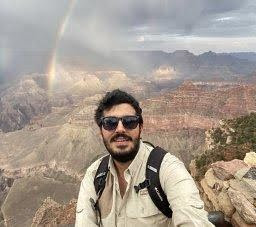 Emrah Ozpolat, University of Pittsburgh Emrah Ozpolat, University of Pittsburgh
I am a PhD student at University of Pittsburgh. I am honored to receive the Andrew Slater Memorial Award from the U.S. Permafrost Association (USPA). This award provides me with the opportunity to present my research at the AGU Fall Meeting 2024. My research investigates the magnitude of hillslope and channel erosion across continuous and discontinuous permafrost regions in Alaska. The findings suggest that erosion is primarily driven by diffusive processes, which are significantly more intense in discontinuous permafrost areas. This increased intensity is likely influenced by enhanced freeze-thaw cycles, a thicker active layer, and frequent wildfires. These results suggest that as permafrost transitions from continuous to discontinuous under future warming conditions, sediment flux from hillslopes will likely increase, with important implications for sediment transport, aquatic systems, and carbon budgets in Arctic regions. I am deeply grateful to the USPA and the Andrew Slater Memorial Award family for their generous support of early-career scientists and their commitment to advancing our understanding of permafrost landscapes.
2023 Award Winner
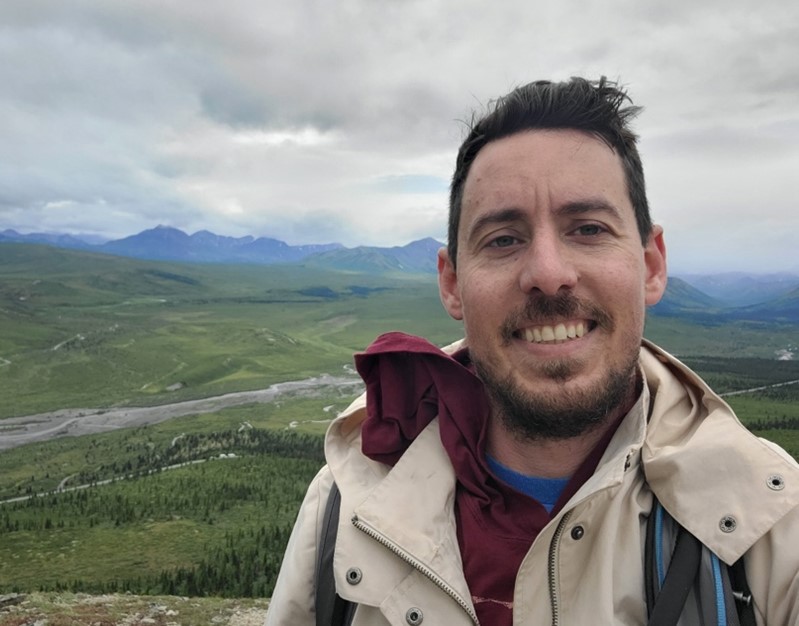 Jon Wells, Northern Arizona University Jon Wells, Northern Arizona University
I’m currently a poctdoctoral researcher working on a model intercomparison of state-of-the-art carbon cycle models simulating high-latitude ecosystems underlain by permafrost. Our work would not be possible without Andrew and his seminal works that laid the foundation for our high-latitude simulations today. With support from the Andrew Slater Memorial Fund, I will attend AGU 2023 and share initial work from the Warming Permafrost Model Intercomparison Project (WrPMIP) in a talk entitled “State-of-the-arctic: Confronting State-of-the-art Carbon Cycle Models with Pan-Arctic Warming Responses.” The WrPMIP group includes 12 modeling teams and approximately 30 modelers that are simulating both the entire Pan-Arctic and individual warming sites distributed throughout all Arctic nations. Following in the footsteps of giants like Andrew, we aim to further improve representation of high-latitude ecosystem responses in carbon cycle and Earth system models. The WrPMIP group and I are humbled by the continued support from the Andrew Slater Memorial Fund, PYRN, and USPA. Thank you!
2022 Award Winners
|
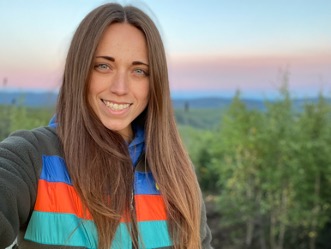 Zena Robert, Montana State University Zena Robert, Montana State University
My name is Zena Robert, and I am a Ph.D. student at Montana State University. My research investigates the feedbacks between geomorphic processes and permafrost dynamics on soil- mantled hillslopes in Interior Alaska. I was able to present my research at the AGU Fall Meeting 2022 with the help of UPEF through the Andrew Slater Memorial Award. Attending the meeting allowed me to connect with the USPA community and learn more about all the amazing research projects currently being done by other students and professionals. Presenting a poster at AGU was an amazing career building experience and provided an opportunity to receive valuable feedback regarding my research. It is an honor to have received the Andrew Slater Memorial Award, and I would like to thank the USPA, UPEF, and PRYN for their support and dedication to the permafrost community.
|
|
Josie Arcuri, University of Colorado Boulder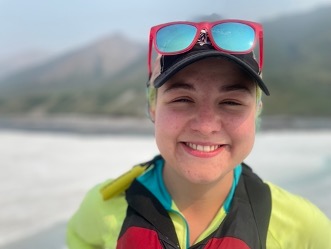
This award enables my AGU 2022 attendance and a poster presentation on my work estimating permafrost river bank erosion. I am in the 2nd year of my PhD program and appreciate this opportunity to share my research with an interactive poster. My poster reports observations of permafrost river banks and suggests a new model for their erosion along gravel-bedded rivers on the North Slope of Alaska. I apply this model to a portion of the Canning River, AK to derive an annual mass flux from river bank erosion across the Canning’s coastal plain. I also outline how bank erosion contributes to a fluvial carbon budget. Presenting at AGU allows me to develop these ideas and practice communicating them effectively. Attending AGU in person will also allow me to connect with other permafrost scientists. From those connections, I hope to expand my understanding of permafrost and become involved in the USPA and PYRN organizations. Thank you, UPEF and Andrew Slater’s family, for investing in me and my research on permafrost river bank erosion.
|
2019 Award Winner
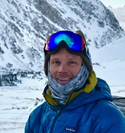 David Rey, Colorado School of Mines: As an early career scientist nearing the end of my Ph.D., attending AGU allowed me to highlight my research and develop new professional relationships. The Andrew Slater Memorial award provided essential travel funding that enabled me to plan future collaborative work with existing colleagues and give my first invited AGU presentation. As a scientist who works on topics that require multidisciplinary expertise, attending the AGU conference is always a productive experience. Specifically, it enables me to interface with multiple science communities and gain insight into recent research related to my field of study. The experience of attending the 2019 Fall meeting in San Francisco was an invaluable as I transition from a Ph.D. student to a more independent early career scientist, and I would like to thank the USPA and PYRN communities for making my attendance possible. David Rey, Colorado School of Mines: As an early career scientist nearing the end of my Ph.D., attending AGU allowed me to highlight my research and develop new professional relationships. The Andrew Slater Memorial award provided essential travel funding that enabled me to plan future collaborative work with existing colleagues and give my first invited AGU presentation. As a scientist who works on topics that require multidisciplinary expertise, attending the AGU conference is always a productive experience. Specifically, it enables me to interface with multiple science communities and gain insight into recent research related to my field of study. The experience of attending the 2019 Fall meeting in San Francisco was an invaluable as I transition from a Ph.D. student to a more independent early career scientist, and I would like to thank the USPA and PYRN communities for making my attendance possible.
2018 Award Winner
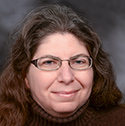 Risa Madoff, University of North Dakota: With support from the USPA and PYRN through the Andrew Slater Memorial Award I was able to attend the AGU 2018 annual meeting and give my first oral presentation of research there. Receiving financial support to attend AGU to present research is a privilege for anyone. As an early career, completing my PhD in 2015, attending meetings has become much more difficult, as there are fewer opportunities for funding, yet to remain in research pipelines and on radar screens, attending them is ever more important. This year I discovered the permafrost community through USPA and PYRN and was delighted by the sense of fellowship at the annual business and reception meeting at AGU. Issues of permafrost grow in importance for understanding soil environments in cold regions and their response to climate change and for addressing the practical consequences of their thawing. Studying the response of permafrost as a feature in transitional environments also contributes significantly to modeling landscape evolution and environmental change. In my research I want to investigate the spectrum of transitions and thresholds that occur in sediment and soil at the landform scale to develop a framework for understanding how fundamental geomorphic processes - erosion, sediment transport, soil formation and weathering - respond to climate change. Permafrost regions are a key benchmark in this regard. I think we need to improve parametrizations of mechanical and chemical responses by studying and comparing surface processes and materials in a variety of climates to understand a full spectrum of responses to climate change. Such parameters can be used for landscape evolution modeling through past climate changes, using a space for time substitution approach. They can also be used for predicting threshold boundaries of surface processes at various scales, such as for determining the climatic conditions in various regions that will initiate mass movement. I look forward to being a part of the permafrost community and will be a strong advocate for researchers at all stages to join. Risa Madoff, University of North Dakota: With support from the USPA and PYRN through the Andrew Slater Memorial Award I was able to attend the AGU 2018 annual meeting and give my first oral presentation of research there. Receiving financial support to attend AGU to present research is a privilege for anyone. As an early career, completing my PhD in 2015, attending meetings has become much more difficult, as there are fewer opportunities for funding, yet to remain in research pipelines and on radar screens, attending them is ever more important. This year I discovered the permafrost community through USPA and PYRN and was delighted by the sense of fellowship at the annual business and reception meeting at AGU. Issues of permafrost grow in importance for understanding soil environments in cold regions and their response to climate change and for addressing the practical consequences of their thawing. Studying the response of permafrost as a feature in transitional environments also contributes significantly to modeling landscape evolution and environmental change. In my research I want to investigate the spectrum of transitions and thresholds that occur in sediment and soil at the landform scale to develop a framework for understanding how fundamental geomorphic processes - erosion, sediment transport, soil formation and weathering - respond to climate change. Permafrost regions are a key benchmark in this regard. I think we need to improve parametrizations of mechanical and chemical responses by studying and comparing surface processes and materials in a variety of climates to understand a full spectrum of responses to climate change. Such parameters can be used for landscape evolution modeling through past climate changes, using a space for time substitution approach. They can also be used for predicting threshold boundaries of surface processes at various scales, such as for determining the climatic conditions in various regions that will initiate mass movement. I look forward to being a part of the permafrost community and will be a strong advocate for researchers at all stages to join.
2017 Award Winner
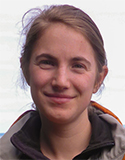 Heidi Rodenhizer, Northern Arizona University: I am working on tracking subsidence at a permafrost warming experiment in Healy, AK and am interested in whether it is possible to track active layer thickness (the depth to permafrost at the end of summer) using various remotely sensed products. This year at AGU, I was able to present a poster quantifying the impact of permafrost warming on subsidence. Because of very fast subsidence at our warming site, we have been underestimating changes in active layer thickness, which means we have been underestimating permafrost thaw. I was able to meet a lot of scientists working on similar permafrost issues and get feedback to help with my future research. Heidi Rodenhizer, Northern Arizona University: I am working on tracking subsidence at a permafrost warming experiment in Healy, AK and am interested in whether it is possible to track active layer thickness (the depth to permafrost at the end of summer) using various remotely sensed products. This year at AGU, I was able to present a poster quantifying the impact of permafrost warming on subsidence. Because of very fast subsidence at our warming site, we have been underestimating changes in active layer thickness, which means we have been underestimating permafrost thaw. I was able to meet a lot of scientists working on similar permafrost issues and get feedback to help with my future research.
|




 Zena Robert,
Zena Robert, 
 David Rey, Colorado School of Mines:
David Rey, Colorado School of Mines:  Risa Madoff, University of North Dakota: With support from the USPA and PYRN through the Andrew Slater Memorial Award I was able to attend the AGU 2018 annual meeting and give my first oral presentation of research there. Receiving financial support to attend AGU to present research is a privilege for anyone. As an early career, completing my PhD in 2015, attending meetings has become much more difficult, as there are fewer opportunities for funding, yet to remain in research pipelines and on radar screens, attending them is ever more important. This year I discovered the permafrost community through USPA and PYRN and was delighted by the sense of fellowship at the annual business and reception meeting at AGU. Issues of permafrost grow in importance for understanding soil environments in cold regions and their response to climate change and for addressing the practical consequences of their thawing. Studying the response of permafrost as a feature in transitional environments also contributes significantly to modeling landscape evolution and environmental change. In my research I want to investigate the spectrum of transitions and thresholds that occur in sediment and soil at the landform scale to develop a framework for understanding how fundamental geomorphic processes - erosion, sediment transport, soil formation and weathering - respond to climate change. Permafrost regions are a key benchmark in this regard. I think we need to improve parametrizations of mechanical and chemical responses by studying and comparing surface processes and materials in a variety of climates to understand a full spectrum of responses to climate change. Such parameters can be used for landscape evolution modeling through past climate changes, using a space for time substitution approach. They can also be used for predicting threshold boundaries of surface processes at various scales, such as for determining the climatic conditions in various regions that will initiate mass movement. I look forward to being a part of the permafrost community and will be a strong advocate for researchers at all stages to join.
Risa Madoff, University of North Dakota: With support from the USPA and PYRN through the Andrew Slater Memorial Award I was able to attend the AGU 2018 annual meeting and give my first oral presentation of research there. Receiving financial support to attend AGU to present research is a privilege for anyone. As an early career, completing my PhD in 2015, attending meetings has become much more difficult, as there are fewer opportunities for funding, yet to remain in research pipelines and on radar screens, attending them is ever more important. This year I discovered the permafrost community through USPA and PYRN and was delighted by the sense of fellowship at the annual business and reception meeting at AGU. Issues of permafrost grow in importance for understanding soil environments in cold regions and their response to climate change and for addressing the practical consequences of their thawing. Studying the response of permafrost as a feature in transitional environments also contributes significantly to modeling landscape evolution and environmental change. In my research I want to investigate the spectrum of transitions and thresholds that occur in sediment and soil at the landform scale to develop a framework for understanding how fundamental geomorphic processes - erosion, sediment transport, soil formation and weathering - respond to climate change. Permafrost regions are a key benchmark in this regard. I think we need to improve parametrizations of mechanical and chemical responses by studying and comparing surface processes and materials in a variety of climates to understand a full spectrum of responses to climate change. Such parameters can be used for landscape evolution modeling through past climate changes, using a space for time substitution approach. They can also be used for predicting threshold boundaries of surface processes at various scales, such as for determining the climatic conditions in various regions that will initiate mass movement. I look forward to being a part of the permafrost community and will be a strong advocate for researchers at all stages to join. Heidi Rodenhizer, Northern Arizona University: I am working on tracking subsidence at a permafrost warming experiment in Healy, AK and am interested in whether it is possible to track active layer thickness (the depth to permafrost at the end of summer) using various remotely sensed products. This year at AGU, I was able to present a poster quantifying the impact of permafrost warming on subsidence. Because of very fast subsidence at our warming site, we have been underestimating changes in active layer thickness, which means we have been underestimating permafrost thaw. I was able to meet a lot of scientists working on similar permafrost issues and get feedback to help with my future research.
Heidi Rodenhizer, Northern Arizona University: I am working on tracking subsidence at a permafrost warming experiment in Healy, AK and am interested in whether it is possible to track active layer thickness (the depth to permafrost at the end of summer) using various remotely sensed products. This year at AGU, I was able to present a poster quantifying the impact of permafrost warming on subsidence. Because of very fast subsidence at our warming site, we have been underestimating changes in active layer thickness, which means we have been underestimating permafrost thaw. I was able to meet a lot of scientists working on similar permafrost issues and get feedback to help with my future research.
